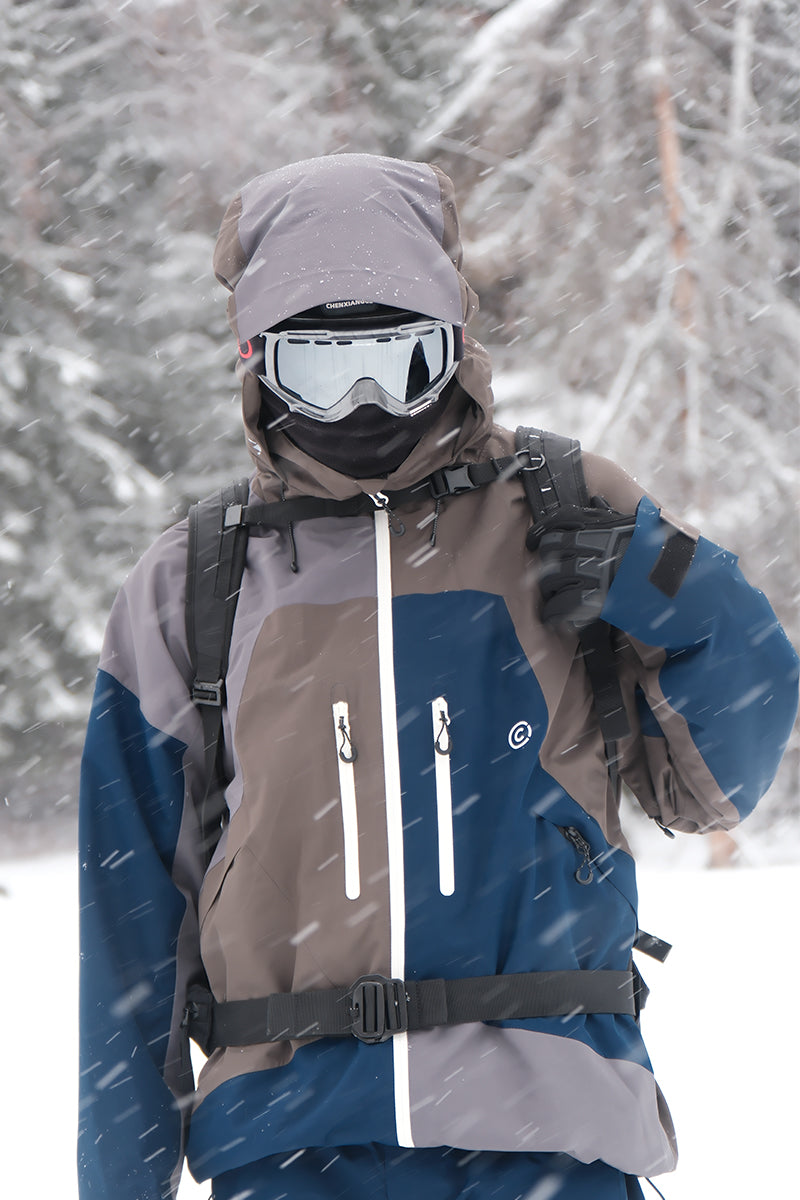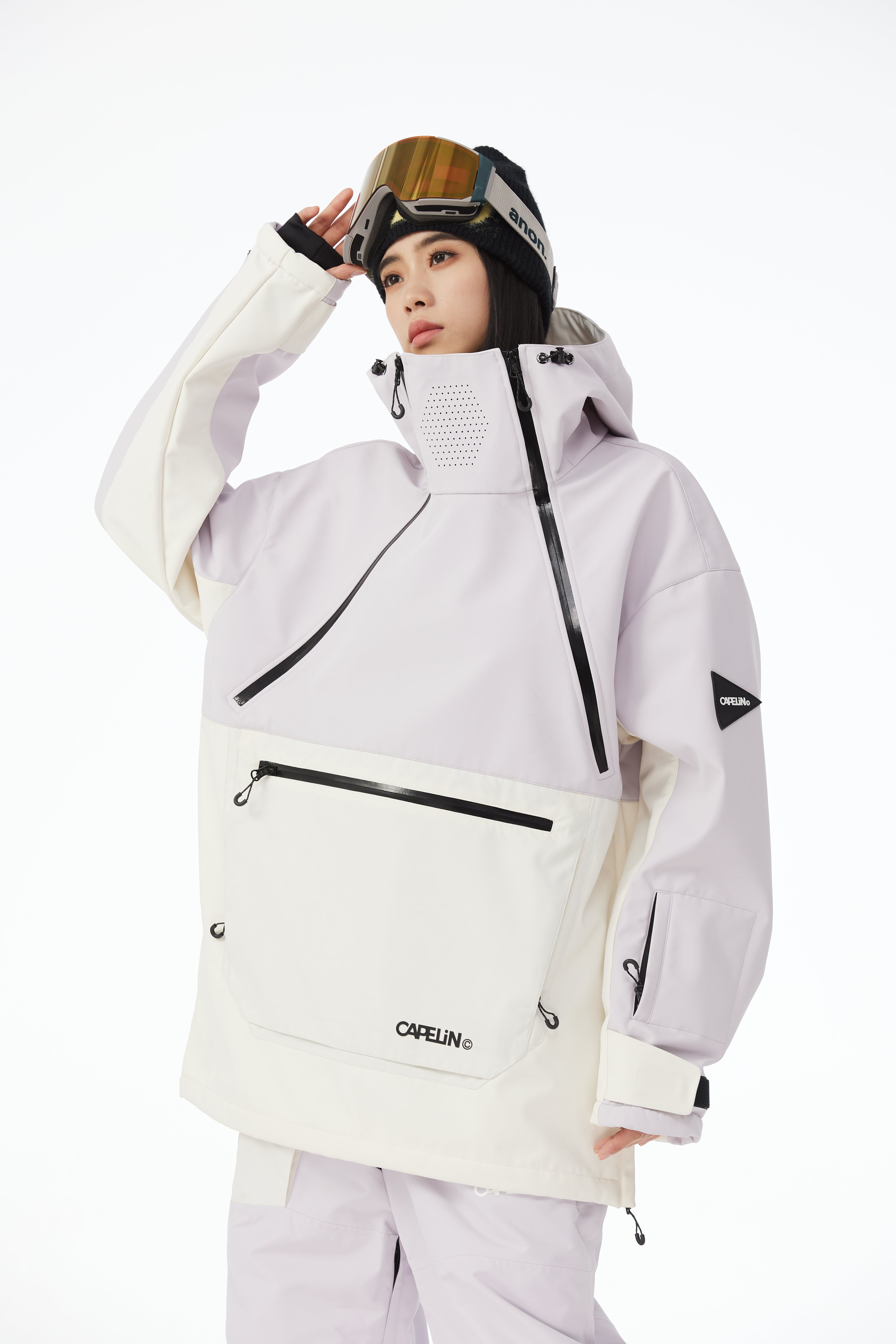Introduction
Snowboarding is all about fun—until you’re freezing, soaked, or struggling with gear that doesn’t work. The right outfit keeps you warm, dry, and comfortable so you can focus on shredding the slopes instead of shivering. Whether it’s your first time or you’re leveling up your gear, this guide breaks down exactly what to wear (and why) so you can conquer the mountain with confidence.
Here’s what you need for a day on the mountain:
● Snowboard Jacket: Waterproof jacket and pants protect you from snow and wind.
● Base Layers & Middle Layers: Adjustable base and mid-layers help you stay comfortable in changing weather.
● Gloves: Waterproof, insulated gloves keep your hands warm and dry.
● Goggles: They shield your eyes from wind, snow, and sun glare.
● Helmet: A snowboard helmet is essential for safety.
● Boots: Snowboard boots keep your feet warm, supported, and dry.
Contents
● Snowboard Layering Basics: Snowboard jacket, middle layers and base layers
○ Base Layer: Stay Dry & Comfortable
○ Mid Layers: Adjustable Warmth
○ Outer Layer: Protection from Wind & Snow
● Goggles
● Gloves
● Snowboarding Boots & Socks
● Helmet and other protective gears
Snowboard Layering Basics: Snowboard jacket, middle layers and base layers
Staying comfortable while snowboarding can be tricky—you go from sweating on the slopes to freezing on the chairlift, all while dealing with ever-changing mountain weather. The key is to layering for snowboarding smartly. By adjusting your layers, you can stay warm (but not overheated) and keep moisture away from your skin, ensuring a better day on the mountain.
1. Base Layer: Stay Dry & Comfortable
Your base layer is your second skin, so it should be snug, stretchy, and moisture-wicking. Avoid cotton—it traps sweat, leaving you cold and damp. Instead, opt for synthetic fabrics (like polyester) or merino wool, which dry quickly and regulate temperature well.
2. Mid Layers: Adjustable Warmth
Mid layers provide insulation that you can add or remove as needed. Think fleeces, lightweight sweaters, or thermal pullovers—again, skip cotton and choose materials that breathe. If it’s extra cold, layer up; if you heat up while riding, shed a layer before you sweat too much.
3. Outer Layer: Protection from Wind & Snow
Your jacket is your shield against the elements. You have two main options:
● Insulated Snowboard Jackets: Great for cold days, with built-in warmth (from synthetic fill or down). Some even have removable liners for versatility.
● Shell Jackets: Lightweight, waterproof, and breathable—ideal for spring riding or high-output days when you need maximum airflow.
Snowboarding jackets use special membranes to block snow while letting sweat escape. Check the waterproof and breathability ratings—higher numbers mean better performance in harsh conditions. In general, CapelinCrew has over 20K in waterproof rating, and 15K for breathability rating.
Belwo you can find some Must-Have snowboard Jacket Features:
● Pit zips for quick cooling
● Powder skirt to keep snow out
● Cuff gaiters to seal out snow at the wrists
● Helmet-compatible hood for stormy lift rides
Goggles
When riding in the mountains—whether facing cold, snow, rain, wind, bright sunshine, or snow glare—protecting your eyes with a high-quality pair of goggles is essential. Modern goggle technology has advanced considerably, with most brands now offering anti-fog features to prevent misting, along with superior optical clarity and full UV protection.
Fit should be your top priority when choosing goggles—they should rest comfortably on your face without pressure points and provide a clear, unobstructed field of vision. If you wear a helmet, bring it along to test compatibility.
While many goggles come with versatile all-condition lenses, investing in specialized options can enhance performance. A dark or mirrored lens is ideal for bright, sunny days, while a light, high-contrast lens improves visibility in flat or overcast conditions. Since each brand has its own lens-swapping system, test how quick and easy it is to switch lenses before purchasing.
Importance of UV Protection and Anti-Fog Features
UV protection is crucial in snowboarding eyewear because the UV rays are more intense at higher altitudes and can reflect off the snow, increasing the risk of eye damage.
Goggles with 100% UV protection and mirrored lenses are recommended to safeguard against these harmful rays. Anti-fog features, such as double glazing, ventilation systems, and anti-fog coatings, are important to maintain clear vision and prevent the lenses from steaming up. Also, it can be a significant nuisance and safety hazard on the slopes.
Snowboard Gloves & Mittens
A good pair of waterproof, insulated gloves is essential for snowboarding—cold, wet hands can ruin your day on the mountain. Look for gloves with a breathable yet waterproof outer shell to keep snow out while allowing sweat to escape. Insulation provides warmth without bulk, ensuring you maintain dexterity for adjusting bindings or handling lifts. Wrist straps prevent losing a glove in a fall, and reinforced palms add durability for gripping your board.
CapelinCrew's snowboard mitten with liner, provide full protection of your hands and every feature you need: remover outer layer keep your hand warm while using your phone, insulated outer layer and waterproof shell. Along with wrist band, the mitten got all you need.
Snowboard Boots & Socks
Selecting the right snowboard boots involves finding a balance between comfort and performance. Boots should fit snugly without causing circulation issues or pressure points, and they should keep the heel securely in place to minimize lift. The lacing system, whether traditional, quick-pull, or Boa, should allow for a tight yet comfortable fit.
It's also important to consider the flex of the boot, which should match the rider's style; softer boots are typically better for freestyle and beginners, while stiffer boots are suited for freeriding and racing.
Another thing, boot stiffness affects the responsiveness and control of the snowboard. Stiffer boots provide more support and are better for high-speed riding and variable terrain, while softer boots offer more flexibility for freestyle maneuvers. The right level of stiffness should be chosen based on the rider's preference and riding style.
Snow-specific socks are designed to provide warmth and moisture-wicking properties without being too thick. They should fit snugly to prevent blisters and improve circulation.
Doubling up on socks can create pressure points and reduce circulation, leading to colder feet. It can also cause the feet to move around inside the boots, resulting in a lack of control and potential blisters.
Helmet and other Protective Gear
Protective gear such as helmets, knee pads, and back protection is essential for snowboarding. Helmets are non-negotiable for head protection, knee pads can prevent injuries during falls, and back protection can help safeguard against spinal injuries.
Moreover, protective gear is designed to absorb impact and reduce the severity of injuries. Helmets protect against head trauma, knee pads cushion falls, and back protectors can prevent serious back injuries. Using gear that is properly fitted and designed for snowboarding can significantly reduce the risk of injury.
When looking for sizes of your outerwear, make sure you leave enough room for the protections and they don't feel too tight.
Additional Gear and Accessories
A snowboard backpack serves multiple essential functions for snowboarders on the slopes. It provides a convenient means to carry personal items, safety equipment, and snowboarding essentials such as water, snacks, and extra layers of clothing.
Additionally, beginner should also wear a snowboard face cover to reduce the wind guts when snowboarding in a very fast speed. A good face cover can effectively keep one warm.
Conclusion
Snowboarding for the first time is an exciting adventure, but staying warm, dry, and safe is key to enjoying every moment on the mountain. By mastering the layering system for snowboarding—moisture-wicking base layers, adjustable mid-layers, and a waterproof outer shell—you’ll stay comfortable in any weather. Don’t forget essential gear like goggles for clear vision, insulated gloves for warm hands, and a properly fitted helmet for protection.
Choosing the right snowboard boots and socks ensures control and comfort, while additional protective gear (like knee pads and back protectors) adds extra safety as you progress. And if you’re heading into the backcountry, a snowboard backpack with emergency gear is a must.
With the right clothing and equipment, you’ll focus less on the cold and more on the thrill of riding. Now that you know what to wear snowboarding for the first time, you’re ready to hit the slopes with confidence. Stay warm, stay safe, and most importantly—have fun shredding!
FAQ
Q:How many layers should I wear snowboarding?
A: Theoretically, there’s no limit to how many layers you can wear while snowboarding—some riders even wear just a T-shirt! But for beginners unsure about layering, we generally recommend 2–3 layers (a moisture-wicking base layer like a T-shirt, a mid layer for insulation, and a waterproof outer shell). This system lets you easily adjust: remove a layer if you’re overheating or add the outer shell if it gets colder.
Q: Are ski jackets and snowboard jackets the same?
A: No, they are similiar, but not exactly the same. Ski jackets in generally are slimer, while snowboard jacket are more baggy. There are also functionaliy differences. For details please refer to "is there difference between ski and snowboard jacket".












